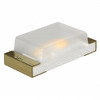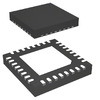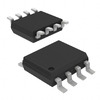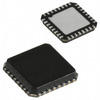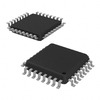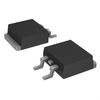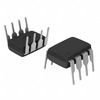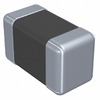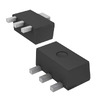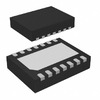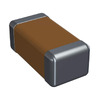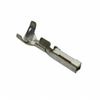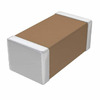A23 Battery Specifications and Compatibility
The A23 battery is a small, cylinder-shaped battery with high voltage. Also called 23A, 23AE, or MN21, it runs at 12 volts and much higher than AA or AAA batteries. Its special design makes it perfect for gadgets that need a small but strong power source. This article looks at the features, performance, and uses of the A23 battery. It compares different brands and other common batteries. By examining how it’s made, its chemical composition, and how it works in different situations, we understand why the A23 battery is a popular choice for certain electronics applications.
Catalog

Figure 1: A23 Battery
A23 Battery Features and Specifications
The A23 battery measures about 10.3 mm in diameter and 28.5 mm in height making it compact enough to fit into devices where space is tight. Weighing around 8 grams, this battery is lightweight, as it keeps the overall device weight low.
The A23 battery is a 12-volt alkaline battery, different from the usual 1.5-volt AA or AAA batteries. Inside an A23 battery, smaller cells are stacked together to make the higher voltage. The main chemicals used are manganese dioxide and zinc, with manganese dioxide as the cathode and zinc as the anode. This chemical mix helps produce electricity. Alkaline batteries like the A23 are valued for their high energy and long shelf life compared to other non-rechargeable batteries.

Figure 2: A23 Battery Features
The A23 battery is recognized by different standardization organizations under various names:
• IEC (International Electrotechnical Commission): The IEC labels this battery as 8LR932. The "8LR" prefix signifies a 12-volt alkaline battery within the IEC's system.
• ANSI (American National Standards Institute): In the ANSI system, the A23 battery is known as 1811A. This helps standardize the specifications across manufacturers, ensuring compatibility with devices designed for this battery type.
Brand Comparisons: Energizer vs. Duracell

Figure 3: Energizer A23 Battery
Construction and Performance Features of Energizer A23 Battery
The Energizer A23 battery is a small, cylindrical battery that used in devices like remote controls, wireless doorbells and keyless entry systems. It is about 28.5 mm long and 10.3 mm wide with a voltage of 12V. Made with zinc-manganese dioxide (Zn/MnO2) it has high energy density and reliable performance. The battery is encased in a sturdy metal shell with positive and negative terminals at opposite ends. Its internal parts are designed to store energy efficiently and prevent leaks.
The Energizer A23 battery has a capacity of about 55 mAh. At room temperature (20°C or 68°F) it performs steadily. However, its performance can vary under different conditions. For high-drain uses, the voltage drops more quickly and reducing its effective capacity. In colder temperatures, chemical reactions slow down leading to lower performance and capacity.
The lifespan of the Energizer A23 battery depends on how it's used and the environment. In low-drain devices it can last from several months to a year. It is designed to deliver stable voltage throughout its life. This stable voltage is important for electronic circuits. The battery has a flat discharge curve providing consistent power until it needs to be replaced. When the voltage drops below a certain level, it’s time to replace the battery to keep the device working properly.
Construction and Performance Features of Duracell A23 Battery
The Duracell A23 is a small, round 12-volt battery that used in devices like car alarms, garage door openers and remote controls. It has a chemical makeup of manganese dioxide and zinc, gives it a high amount of stored energy and a consistent output. Its small size and design allow it to deliver a steady 12 volts throughout its life.
The Duracell A23 battery has a capacity of 38 to 55 milliampere-hours (mAh). How quickly it discharges depends on the device it's used in and the surrounding temperature. If used continuously, it keeps its capacity well but in colder weather or high-power situations, its output can drop. Like other alkaline batteries when a lot of power is drawn quickly, its capacity decreases noticeably.
How long a Duracell A23 battery lasts depends on how often and how much power the device uses. In devices that don’t use much power, the battery can last several years. In devices that use a lot of power, it will run out faster. A key strength of the A23 is its stable voltage and ensures that devices keep running reliably without sudden power loss.

Figure 4: Duracell A23 Battery
Comparative Analysis with Other Battery Types

Figure 5: A23 vs. A27 Battery
A23 vs. A27 Battery
The A23 and A27 batteries are used in small electronic devices but they are different in size and shape that may affects where they can be used. The A23 is 10.3 mm wide and 28.5 mm long. The A27 is smaller with a width of 8 mm and a length of 28 mm. Because of these differences, the A23 might not fit in devices that need the slimmer A27.
Both batteries are alkaline but their voltages are different. The A23 is a 12-volt battery, and the A27 is an 8-volt battery used in devices that need less power. This difference in voltage is important because it affects how the device works.
Devices made for the A23 won’t work properly with the A27 due to its lower voltage. Also, the A23 might be too big to fit in a device made for the A27 causing problems like loose batteries or not being able to insert the battery at all. Always choose the battery that matches your device’s requirements to ensure it works correctly.
A23 vs. N-Cell (E90) Battery
The A23 and N-Cell batteries are not interchangeable because of their different voltages and sizes. The N-Cell is a bit larger with a diameter of around 12 mm and a length of 30.2 mm. This size differences affect how well they fit into battery compartments designed for specific batteries. The size mismatch can cause poor contact or pressure within the battery compartment and leading to inconsistent power delivery or the device working only sometimes.
Another main difference is voltage. The A23 battery gives out 12 volts by stacking multiple cells inside it while the N-Cell provides only 1.5 volts. This big difference in voltage affects how devices operate and how much energy they get. Using an A23 battery in a device meant for an N-Cell can be risky. The main risk is potential damage like overheating, circuit damage, or even device failure.
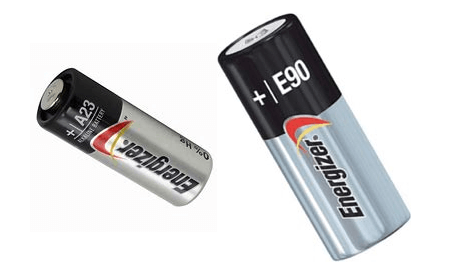
Figure 6: A23 vs. N-Cell (E90) Battery
A23 vs. AAA Battery
The AAA battery is also cylindrical but larger than the A23. It measures about 10.5 mm in diameter and 44.5 mm in length. This size makes it suitable for household items like remote controls and digital cameras and need a bit larger battery to provide steady power for a longer time.
The AAA battery provides 1.5 volts. This lower voltage is enough for most household gadgets designed to run on less power. There are also rechargeable AAA batteries that give 1.2 volts, perfect for frequent use with a compatible charger.
The voltage difference between A23 and AAA batteries greatly affects which devices they can be used in. The 12-volt output of the A23 is too high for devices made to run on 1.5 volts as it could cause overheating and damage. Similarly, using a AAA battery in a device designed for a 12-volt power supply would result in insufficient power causing the device to malfunction.

Figure 7: AAA Battery vs. A23
A23 vs. 2/3AAA Battery
A23 and 2/3AAA batteries look alike and can be confusing. Both are cylindrical and have almost the same diameter. The 2/3AAA battery found in cordless phones and similar devices has a similar width about 30 mm long. Because of this, you might think they can be used interchangeably but that’s not the case.
Even though they look similar, these batteries have very different voltages. The A23 battery is a 12-volt battery, meant for devices that need more power. In contrast, the 2/3AAA battery provides only 1.2 volts if rechargeable or around 1.5 volts if non-rechargeable. This big voltage difference means that they can’t be swapped out for each other.
Putting a 2/3AAA battery into a device meant for an A23 battery will result in not enough power and making the device not work properly. Using an A23 battery in a device meant for a 2/3AAA could cause too much power possibly damaging the device or even causing safety issues like overheating. It is important to use the right battery to ensure your device works correctly and safely.
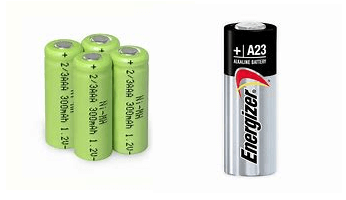
Figure 8: 2/3AAA Battery vs. A23
Applications of A23 Batteries
Remote Controls: A23 batteries are used in remote controls for garage doors, car alarms, and home security systems. They provide enough power in a small package.
Keyless Car Entry: These batteries power key fobs for cars. Their size and power make them to work well and are easy to use.
Wireless Doorbells: Some wireless doorbells use A23 batteries because they give high power in a small size.
Small Medical Devices: A23 batteries are used in small medical devices like glucose meters and blood pressure monitors.
Personal Alarms: Safety devices like electronic whistles or panic alarms use A23 batteries.
Toys: Some small electronic toys and hobby gadgets use A23 batteries for power. Their ability to give enough power in a small size makes them a popular choice.
Advantages and Disadvantages of A23 Batteries
|
Advantages |
Disadvantages |
|
Small Size: Perfect for small gadgets. |
Low Capacity: Don’t hold as much energy
as bigger batteries and can run out quickly. |
|
High Voltage: 12-volt output, more than
AA, AAA, or 9V batteries ideal for devices needing more power. |
More Expensive: Higher cost over time due
to frequent replacements compared to rechargeable or higher-capacity
batteries. |
|
Lightweight: Light materials and small
size making portable devices easy to carry and use. |
Bad for the Environment: Contribute to
waste with harmful chemicals if not disposed of properly. |
|
Leak Resistant: Designed to resist leaks,
protecting devices from damage and extending the lifespan of both the battery
and the device. |
Limited Use: Only fit specific devices
due to unique size and voltage. |
|
Easy to Find: Available in many stores
and online so, easy to get replacements. |
Not Rechargeable: Most can’t be
recharged, less cost-effective and eco-friendly. |
Safety and Handling of A23 Batteries
Firstly, store properly. Keep A23 batteries in a cool, dry place, away from direct sunlight.
Secondly, keep packaging. Store batteries in their original packaging until you're ready to use them to prevent short circuits.
Next, avoid contact. Ensure the battery terminals don't touch metal objects to avoid short circuits.
Then, follow regulations. Adhere to local guidelines for battery disposal.
Finally, recycle. Take used batteries to designated recycling points to prevent them from contaminating landfills.

Figure 9: Safety and Handling of A23 Batteries
Conclusion
The A23 battery is very important for small electronic devices because it is small, light, and provides high voltage. Even though it doesn't last long, the A23 is great because it is powerful and doesn't leak easily. This shows why the A23 battery is special and why it's important to choose the right battery for each device. Both consumers and makers need to know about the A23 battery's benefits to make smart choices. As technology gets better, the goal is to make these batteries last longer and be better for the environment while still being good for modern devices.
Frequently Asked Questions [FAQ]
1. Is A23 battery same as AAA?
No, an A23 battery is not the same as a AAA battery. The A23 battery is distinct in its physical size and electrical characteristics. It is longer and has a larger diameter than a AAA battery. A23 batteries operate at 12 volts, higher than the 1.5 volts provided by AAA batteries.
2. What is the difference between A23 and A27 battery?
The difference between an A23 and an A27 battery lies in their size and voltage. Both are 12-volt batteries but differ in dimensions and capacity. The A27 battery is larger and used in applications that demand a bit more power over a longer period than the A23 can provide. The A27 measures approximately 8 mm in diameter and 28 mm in length compared to the A23's 10.3 mm diameter and 28.5 mm length. They are not interchangeable and are used in different devices according to their power needs.
3. Is there a difference between A23 and 23A batteries?
No, there is no difference between an A23 and a 23A battery. These are simply different nomenclatures used by different manufacturers for the same type of battery. This 12-volt alkaline battery is common in compact and high-voltage applications. The specifications for A23 and 23A batteries are identical.
4. Is an A23 battery the same as a 21 23?
No, an A23 battery is not the same as a 21-23 battery. The term "21-23" refers to a size designation for batteries and could imply different characteristics or specifications. Without more specific context, it's usually best to check the device's battery requirement directly or consult specific battery guides to ensure compatibility.
5. Is A23S battery the same as A23?
Yes, an A23S battery is the same as an A23 battery in terms of voltage and size. The "S" in A23S might denote a specific brand or variant but the core electrical specifications remain the same. Both provide 12 volts and are used in similar devices requiring compact, high-voltage power sources. Always ensure the exact specifications match your device's requirements if the manufacturer specifies one type over the other.
About us
ALLELCO LIMITED
Read more
Quick inquiry
Please send an inquiry, we will respond immediately.
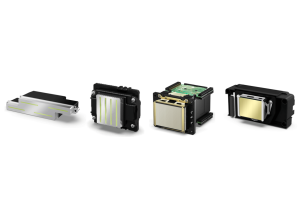
The Complete Guide to Printheads: Types, Functions, and Maintenance
on July 25th

Innovative Guide to AA Batteries: Sizes, Types, and Effective Equivalents
on July 25th
Popular Posts
-

What is GND in the circuit?
on January 1th 3179
-

RJ-45 Connector Guide: RJ-45 Connector Color Codes, Wiring Schemes, R-J45 Applications, RJ-45 Datasheets
on January 1th 2755
-

Understanding Power Supply Voltages in Electronics VCC, VDD, VEE, VSS, and GND
on November 18th 2432
-

Fiber Connector Types: SC Vs LC And LC Vs MTP
on January 1th 2219
-

Comparison Between DB9 and RS232
on January 1th 1842
-

What Is An LR44 Battery?
Electricity, that ubiquitous force, quietly permeates every aspect of our daily lives, from trivial gadgets to life-threatening medical equipment, it plays a silent role. However, truly grasping this energy, especially how to store and efficiently output it, is no easy task. It is against this background that this article will focus on a type of coin cell battery that may seem insignificant on the...on January 1th 1810
-

Understanding the Fundamentals:Inductance Resistance, andCapacitance
In the intricate dance of electrical engineering, a trio of fundamental elements takes center stage: inductance, resistance, and capacitance. Each bears unique traits that dictate the dynamic rhythms of electronic circuits. Here, we embark on a journey to decipher the complexities of these components, to uncover their distinct roles and practical uses within the vast electrical orchestra. Inductan...on January 1th 1767
-

CR2430 Battery Comprehensive Guide: Specifications, Applications and Comparison to CR2032 Batteries
What is CR2430 battery ?Benefits of CR2430 BatteriesNormCR2430 Battery ApplicationsCR2430 EquivalentCR2430 VS CR2032Battery CR2430 SizeWhat to look for when buying the CR2430 and equivalentsData Sheet PDFFrequently Asked Questions Batteries are the heart of small electronic devices. Among the many types available, coin cells play a crucial role, commonly found in calculators, remote controls, and ...on January 1th 1738
-

What Is RF and Why Do We Use It?
Radio Frequency (RF) technology is a key part of modern wireless communication, enabling data transmission over long distances without physical connections. This article delves into the basics of RF, explaining how electromagnetic radiation (EMR) makes RF communication possible. We will explore the principles of EMR, the creation and control of RF signals, and their wide-ranging uses. The article ...on January 1th 1726
-

Comprehensive guide to hFE in transistors
Transistors are crucial components in modern electronic devices, enabling signal amplification and control. This article delves into the knowledge surrounding hFE, including how to select a transistor's hFE value, how to find hFE, and the gain of different types of transistors. Through our exploration of hFE, we gain a deeper understanding of how transistors work and their role in electronic circu...on November 18th 1717
